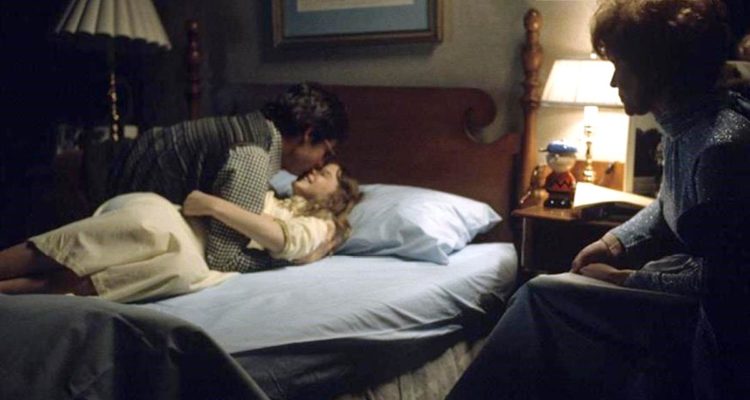If you’ve read William Friedkin’s 500-page autobiography, “The Friedkin Connection,” or the interviews he has done with The Criterion Collection, you know the veteran filmmaker is a raconteur of the highest order. Many of those tales are repeated in the new documentary, “Leap of Faith,” a reverential look at the 85-year-old director’s classic, still-chilling, career-making horror, “The Exorcist.”
READ MORE: The Best Horror Films Of 2020 (So Far)
The material is mostly familiar, and Friedkin’s failures are spun in his favor. There’s no mention of Linda Blair and Ellen Burstyn’s infamous injuries on set, for instance. But Friedkin is such an engaging storyteller, even when he’s rambling about this or that, that you could listen to him go on tangents forever.
READ MORE: The 25 Best Horror Films Of The 1970s
“Leap of Faith’s” biggest asset, not surprisingly, is the man himself. A formidable talker who is invariably smart, candid, and insightful, Friedkin is a man of considerable self-confidence, and listening to him hold forth gives us an always involving glimpse inside a singular cinematic mind. After giving a sketch of his early life and how he was seduced by cinema (cue images of “Citizen Kane”), he speaks of a film that shows “true religious feeling,” using directors like Robert Bresson and Carl Theodor Dreyer as examples. He then walks us through Dryer’s “Ordet,” a drama of faith redeemed, in a rather introspective way. “It inspired me,” he says, “to shoot ‘The Exorcist.'”
What Friedkin does best is tell stories on “The Exorcist,” which are extensive. He goes through every aspect of the film’s creation, from turning heads at the studio to turning prosthetic heads on set, and he is never more engaging than when talking “grace notes,” little moments of magic that occurred while filming. For instance:
Jason Miller: The lead actor wasn’t supposed to be in the film, but ended up in it anyway; “Tubular Bells“: an obscure piece of Mike Oldfield music that appeared out of nowhere, now considered one of the finest scores ever constructed; Iraq: The prologue allowed Friedkin to experiment with mise-en-scene in ways he hadn’t been able to before; “The Empire of Light”: Rene Magritte’s famous painting popped into Friedkin’s head mid-production, inspiring the shot of Priest Lankester Merrin, cloaked in light and fog, approaching Regan’s house in the dead of night; William O’ Malley: After failing to elicit an emotional reaction, Friedkin slapped O’ Malley in the face so he would cry for the camera– a trick borrowed from old-school directors George Stevens and John Ford. Shockingly, Friedkin recalls it as a time of artistic freedom (oh, the good ol’ days).
It’s also fascinating to hear Friedkin’s thoughts on his other movies, whether it be “The French Connection” or “The Sorcerer” or “Killer Joe.” The director, Alexandre Philippe, smartly keeps the camera rolling as his subject pinballs from movie to movie, and his editing team makes the entire conversation feel like one long, cozy, fireside chat.
READ MPRE: William Friedkin Calls Film Critics “Schmucks” And Refuses To Discuss Harvey Weinstein
Friedkin turned over hours of material for Philippe to craft this intimate piece. There are photos and interviews with cast members on set, and enough Inside Hollywood content to fill a book. But there are also inside Friedkin moments: a visit from his wife before a meltdown; an informing analysis on how Dryer influenced the framing, Caravaggio the lighting, Stravinsky the rhythm and Resnais the subliminal images of “The Exorcist.”
READ MORE: The Best Films Of 2020… So Far
The film is revealing, but it ultimately situates Friedkin as individual processing the full weight of life’s journey–from faith to fate–through his work and through his experience. While talking-heady and occasionally self-aggrandizing, “Leap Of Faith, still inspires deep respect for Friedkin as the bright and brilliant artist he is. Flaws and all, the filmmaker is a person who commands your attention whether he is sitting in front of, or behind, the camera. [B]

